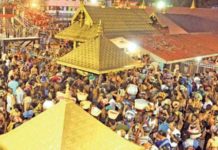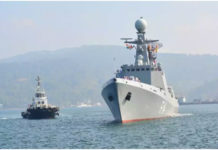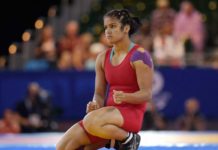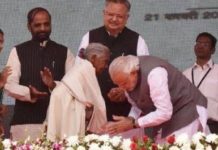Kartik Tripathi
Class of 2017 – NALSAR
![pandit_ravi_shankar_1355285903_540x540[1]](http://www.clatgyan.com/wp-content/uploads/2012/12/pandit_ravi_shankar_1355285903_540x5401-286x300.jpg) Pandit Ravi Shankar, who passed away on 11th December 2012 at Scripps Memorial Hospital, San Diego, California was not merely an exemplary stalwart of one kind of music, he was a trend-setter in himself. In the words of George Harrison, he was “the godfather of world music.” He traversed unexplored terrain in fusing different music styles, and spearheaded the raga rock trend in Western music.
Pandit Ravi Shankar, who passed away on 11th December 2012 at Scripps Memorial Hospital, San Diego, California was not merely an exemplary stalwart of one kind of music, he was a trend-setter in himself. In the words of George Harrison, he was “the godfather of world music.” He traversed unexplored terrain in fusing different music styles, and spearheaded the raga rock trend in Western music.
Born to lawyer parents Shyam Shankar and Hermangini Devi on 7 April 1920 at Varanasi, Ravi Shankar started off as a dancer in his eminent choreographer brother Uday Shankar’s troupe, renowned for “adapting Western theatrical techniques to traditional Indian classical dance”. Having toured Europe and the United States by the age of 18, he gave up his dancing career to study Indian Classical Music under the tutelage of Alauddin Khan, the lead musician in the court of the Maharaja of Maihar. Khan trained him in the sitar and the surbahar- a string instrument closely related to the sitar but with a lower tone, and in the musical styles dhrupad, dhamar, and khyal. He would eventually go on to marry Khan’s daughter Annapurna Devi, with whom he had a son, Shubhendra Shankar, before separating in the late 1940s.
Having completed his training by 1944, Ravi Shankar joined the Indian People’s Theatre Association, where he composed music for ballets in 1944 and 1946. He is credited with having composed the music for Saare Jahaan se Accha at the age of 25. Around 1949, he began recording music for British global entertainment chain HMV, while working as a music director for All India Radio, where he founded the Indian National orchestra and composed for it.
In the mid 1950’s he began composing music for films, most famously Satyajit Ray’s Apu trilogy, Richard Attenborough’s ‘Gandhi’, and the Hindi films ‘Godaan’, ‘Kabuliwala’ and ‘Anuradha’.
His international career began in 1956, when he resigned from All India Radio to tour the United Kingdom, Germany, and the United States; which was also when he recorded his first LP album, Three Ragas in the UK. His accompanists included renowned table players Chatur Lal and Alla Rakha.
In 1962 he founded the Kinnara School of Music in Bombay (now Mumbai) and then established a second Kinnara School in Los Angeles in 1967. However, he shut down both schools a few years later, having grown disenchanted with institutional learning.
Starting in the 1960s, his concert performances with renowned American violinist Yehudi Menuhin and his close association with George Harrison-lead guitarist of the hugely popular British musical group The Beatles, brought Indian music to the attention of the West. In 1967, Ravi Shankar won Grammy Awards for his album East Meets West; in 1972, he won it again for The Concert of Bangladesh with George Harrison, and then in 2002, for ‘Full Circle’, a recording of a live performance at Carnegie Hall, NYC with his daughter Anoushka Shankar (born 1981, with wife Sukanya Rajan).
Exceptionally noteworthy among Ravi Shankar’s accomplishments is his ‘equally expert participation in traditional Indian music and in Indian-influenced Western music’. Some prominent examples of the latter are his concerti for sitar and orchestra, particularly Raga Mala, first performed in 1981. In addition to his musical undertakings, Shankar wrote two autobiographies, published 30 years apart: My Life, My Music (1969) and Raga Mala (1999). Ravi Shankar was frequently accompanied by Anoushka, who, like her father, specialized in blending Indian and Western traditions. Another daughter of Ravi Shankar is multiple Grammy award winning singer-songwriter Norah Jones (born 1979), who found her niche in an enigmatic blend of jazz, pop, and country music.
He has been a recipient of the Sangeet Natak Akademi Award for 1962, Padma Bhushan, in 1967, Padma Vibhushan in 1981, and Bharat Ratna in 1999. He received the music award of the UNESCO International Music Council in 1975. He was awarded the Kalidas Samman by the Government of Madhya Pradesh for 1987–88, the Fukuoka Asian Culture Prize in 1991, the Ramon Magsaysay Award in 1992, and the Polar Music Prize in 1998.
Elizabeth II made him an honorary Knight Commander of the Order of the British Empire for his services to music in 2001. He was made an honorary member of the American Academy of Arts and Letters and received the Legion of Honor, France’s highest civilian honor.
Pandit Ravi Shankar engaged in one brief political stint, when he was nominated to the Rajya Sabha from 1986 to 1992. On news of his death, Mr. Hamid Ansari, chairman of the Rajya Sabha, expressed his “profound sorrow on the passing away of Pandit Ravi Shankar, a former member of the house” while addressing the house on 12th December.
He engaged in his share of philanthropic ventures; deeply moved by the plight of over 8 million refugees that were forced to cross over to India from present-day Bangladesh during the grotesquely violent civil war between East and West Pakistan, he approached his friend George Harrison to help him raise money for their cause. And thus the ‘Concert for Bangladesh’ happened, paving the way for many others to do charity concerts.
His recording “Tana Mana”, released under his private music label in 1987, brought Mr. Shankar’s music into the proverbial new age, with its unique method of blending traditional music with electronic styles. In 1989, the City of Birmingham Touring Opera Company commissioned him to organize a music theatre (Ghanashyam – a broken branch) which created history in the British arts scene.
The sitar maestro gave his very last performance at California State University at Long Beach in the US on November 4th, along with daughter Anoushka Shankar.
The Grammy Foundation recently announced intentions to honor Pandit Ravi Shankar with the lifetime achievement award.
In Prime Minister Manmohan Singh’s words, we have lost “a national treasure and global ambassador of India’s cultural heritage”.
Sources:
http://www.ravishankar.org/bio.html
http://www.thehindu.com/todays-paper/tp-in-school/pandit-ravi-shankar-gets-grammy/article4197812.ece
http://www.britannica.com/EBchecked/topic/538559/Ravi-Shankar
http://www.voanews.com/content/indian-sitarist-ravi-shankar-dies/1563262.html















Raga Jogeshwari is a combination of Ragas Rajashree and Raga Jog. Developed by Pt. Ravi Shankar (RIP), he was once tuning his instrument while playing the raga. Someone remarked, “Aap itna Jogeshwari kheench rahe hain, ab Goregaon tak chala jaayega!” (Jogeshwari is also the name of a railway station in Mumbai and the next station is Goregaon)
Don’t know if it is true or not, but when I read it on some online forum, it cracked me up!
(OK I know this was my facebook status, but still! 😛 🙂
@karthik.Actually you are wrong first comes goregoan and then jogeshwari.by d way thanks for giving me info about the ragas.i didn’t knew this.